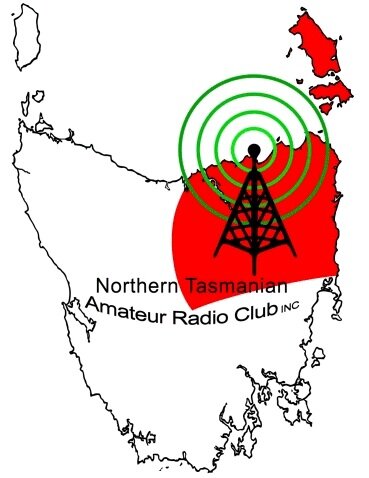Broadcast - 26 May 2024
Last week’s club technical night displayed quite a few items that had been relocated from Ulverstone to Launceston. More specifically items from the NWTARC Car Boot / Table Sale purchased by NTARC members being brought in. There are quite a few technical manuals and books that have now found a new home in our reference library along with pieces of valve equipment that have been dissipated to members. Apart from the “goodies” found and bought it was well worth the days outing if only to catch up with familiar faces and the latest happenings.
Idris VK7ZIR brought in his sale acquisition, a Drake SW-2 receiver.
This Phase Locked Loop 12 volt DC, compact tabletop receiver was manufactured in the USA by the Drake Company in the late 1990s and is in excellent condition. The SW-2 is a microprocessor controlled AM and SSB receiver, covering 100 kHz to 30 MHz. Frequencies are directly entered via the key pad in kHz. Finer tuning can be obtained using the main tuning knob, which offers steps of 50 Hz. The SW-2 uses a very bright light-emitting diode (LED) display with 6 large orange-coloured figures for frequency read-out. To the right are two extra green LEDs that indicate the shortwave band in metres that the radio is receiving within. Outside the broadcast bands this display is switched off. During memory mode tuning, the display shows the selected memory channel 00 to 99. The SW-2 is equipped with a SO 239 connector and screw terminal both for 50 Ohm antennas. An excellent purchase to add to your collection of Drake receivers Idris.
Last week you may remember that Peter VK7KPC, brought in a nice version of an “SDR Transmit/Receive Switch”. That’s the unit that is placed in line between the transmitter and the antenna feed. If transmit level of RF is detected passing through the unit it will automatically protect and provide 38dB isolation to the receiver or SDR feed socket. Peter had assembled a working system complete with auto switcher, up converter, Software Defined Radio or SDR, dummy load and analyser all mounted neatly on a backing board. Using the external “Push-To-Transmit” input Peter demonstrated the units RF path switching ability and impedances when in bypass and dual receive modes. Ideal for test and measurement.
Nice set up Peter, the actual results and panadapter display can be seen on the Discord channel for the 22nd of May.
Ross VK7ALH, brought in a RM Italy KL505 linear amplifier that he is currently working on. This unit is sold as a 10 metre Amateur Band linear amplifier with an output power of up to 230 Watts and is suitable for SSB, CW, AM and FM. I was somewhat surprised not to find any obvious low pass output filtering. If indeed it doesn’t have any, then you would want to be sure your drive rig was very clean!
Unfortunately it looks as though the owner is looking at replacement output devices. This will require four matched RM branded SD1446 RF transistors, not a cheap exercise. Good luck Ross.
Stuart VK7ES, latest acquisition is a handheld self-contained SDR based radio. This radio is a Chinese clone of the Russian-made Malahit or Malachite DSP SDR with a frequency range of 50 kHz to 2GHz. The main difference to the original is appearance, this example having a case constructed of fibreglass printed circuit boards instead of metal. The 90 mm touch screen menus are responsive and easy to use with the spectral and waterfall displays being very bright and clear.
To select frequency you can use the touch screen, on screen keyboard or rotary control on the side of the case. The only other rotary control is for volume. The audio quality is superb, coming from two speakers mounted on the back panel, one active and the other passive. Power is from a 3.7 volt, 2500mAh, 18650 battery. The battery can be charged via a USB-C port which can also be used for PC control and firmware updates. Many reviews rate this version as equal to, or slightly better than the Russian equivalent, which
suffered from noise caused by the display. Antenna connection is by top mounted SMA socket for either external antenna or the supplied telescope antenna. Being Chinese made, the price is a good deal lower than the original and I was expecting to hear a thin tinny sound that comes from a lot of compact handhelds and radios. We were greeted with an incredibly well rounded sound when listening to ABC Classic FM. As a bonus I also found the operating system to be one of the more intuitive to use.
As always, pictures will be available on the NTARC Web site under “Blogs” for this broadcast.
NTARC Blogs
UPCOMING EVENTS
TestNet and TechNet session - Every Wednesday, TestNet/CW course on 3.580MHz from 7 pm till 7.30 pm, then a TechNet on 3.567MHz from 7.30 pm till about 8.30 pm. Your host for the evening will be Nic VK7WW.
Coffee Morning - held every Friday in the NTARC Club rooms. Time is from 10 am to noon and we look forward to seeing you all there. So why not pop in and join us for a cuppa, there is endless tea and coffee along with biscuits available for a donation.
Club Room Technical night session - The next session will be on Wednesday the 5th June and will commence at the usual time of 6.30 pm, with the feature REAST presentation on “Glitching Pulsars – the sequel” beginning at 7:30pm. At the Club Room Archer Street, Rocherlea.
Finally - A reminder to all members that if you have any items of news you would like added to our weekly roundup, no matter how trivial, then please email them to the Secretary at the following address news@ntarc.net all items to be received no later than 5 pm on the Friday prior to the Broadcast.
That’s all folks,
73, Stefan VK7ZSB, Secretary NTARC Inc.







